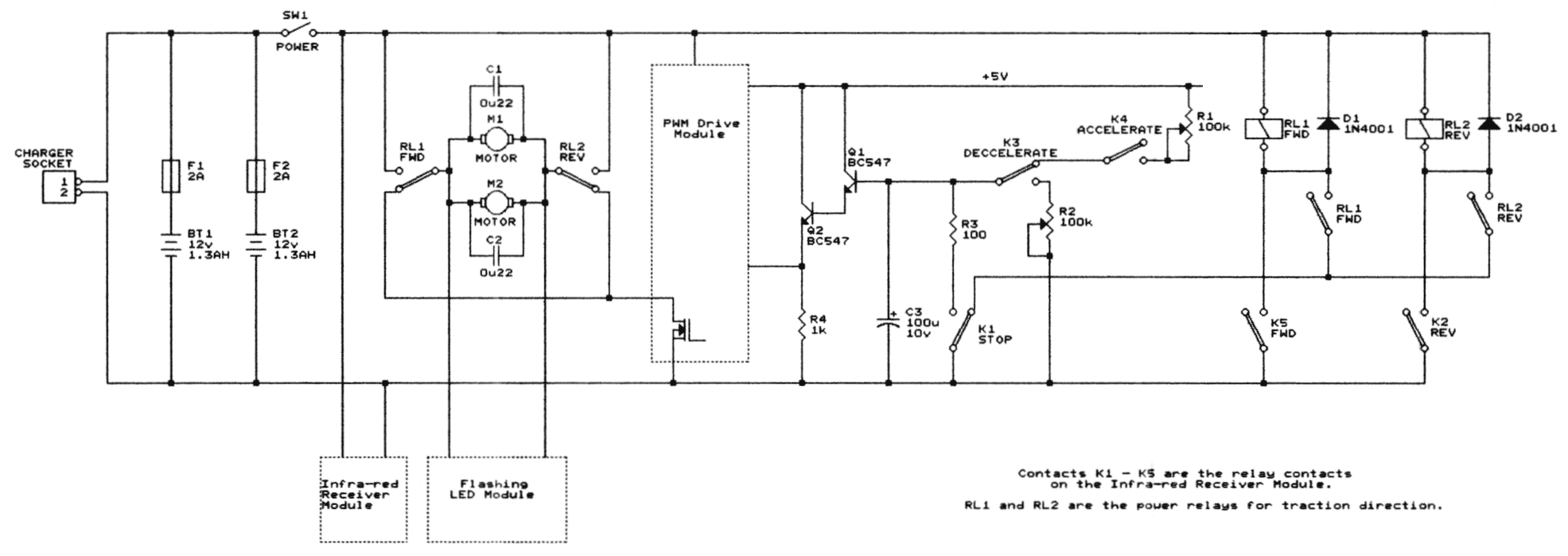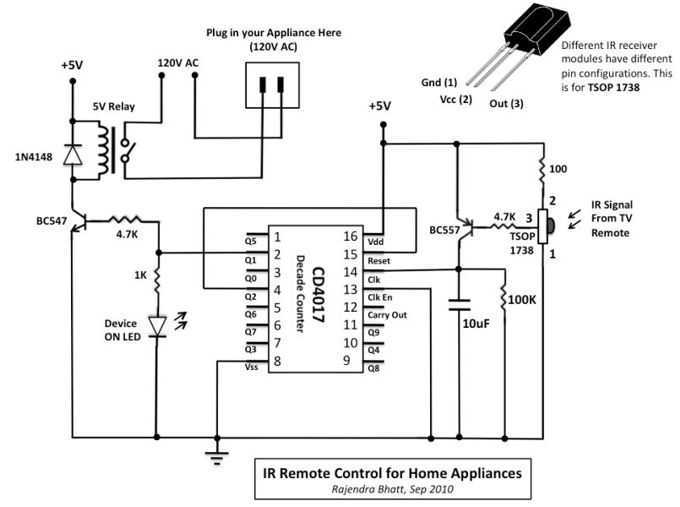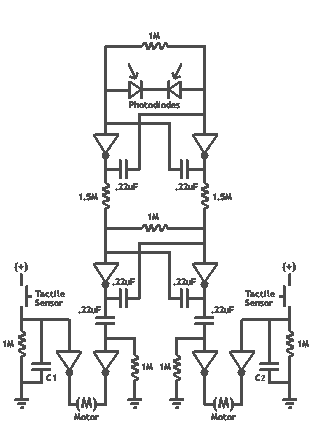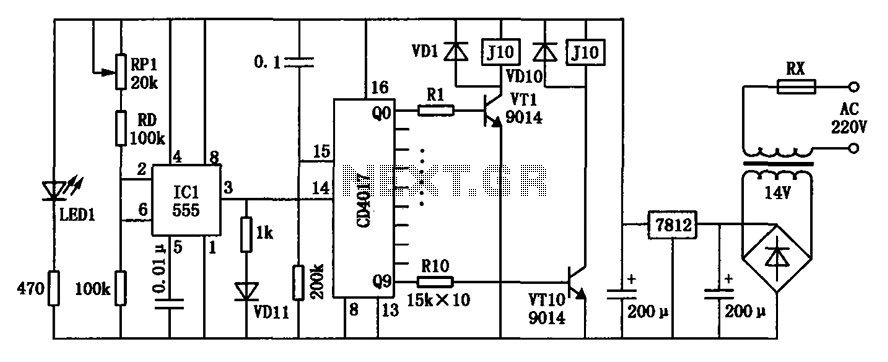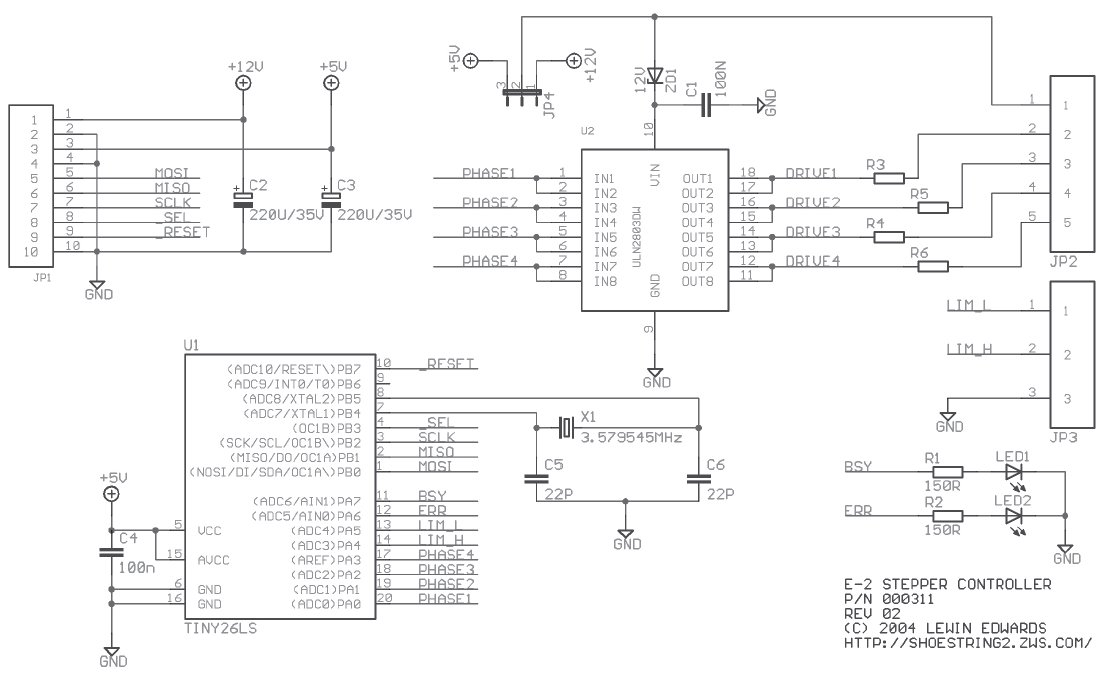
Remote IR controller
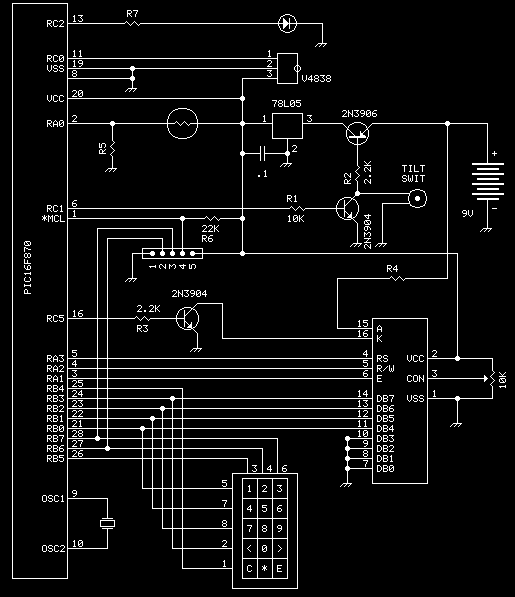
This unit provides 2-way IR communications using a numeric keypad and an LCD display. Data is sent and received in ASCII with no regard to what the data means to any particular device. The ASCII data still needs some form of encoding. For this, 10-pulse coding of 38kHz IR is used with a 99 cent receiver chip, TSOP4838. The transmitting is done with a straight IR LED with both carrier and coding done in software. As you can see from the diagram below, the membrane switch and LCD display use up quite a few I/O lines even with some sharing of signals. This required the use of a larger (28-pin) PIC for this controller. However, it means that the target device it controls needs only 2 I/O lines for sending and receiving the IR data. Although functional at this time, some features and niceties need to be added later.
The described unit implements a two-way infrared (IR) communication system, utilizing a numeric keypad and an LCD display for user interaction. The communication protocol is based on ASCII data, which allows for flexibility in the types of information exchanged between devices. However, since ASCII data does not inherently include any encoding, a specific encoding method is required to facilitate effective transmission.
The encoding method chosen is 10-pulse coding at a frequency of 38 kHz, which is a common standard for IR communication. This frequency is suitable for consumer electronics and is compatible with the TSOP4838 IR receiver chip, which is designed to demodulate signals at this frequency. The IR LED used for transmission operates in conjunction with a microcontroller to generate the necessary modulated signal, with both the carrier frequency and the encoding scheme implemented in software. This allows for a more streamlined and cost-effective design, as the use of a single IR LED suffices for the transmission of encoded data.
The system architecture includes a membrane switch interface, which serves as the input method, and an LCD display, which provides visual feedback to the user. The design necessitates a microcontroller with a sufficient number of input/output (I/O) pins to accommodate the various components. A 28-pin PIC microcontroller has been selected for this purpose, offering enough I/O lines to manage the keypad and LCD while still allowing for the two I/O lines required for IR data transmission and reception.
The system's architecture is designed for efficiency, allowing the target device to communicate using only two I/O lines, thus minimizing complexity and potential resource conflicts. While the current implementation is functional, there are plans for future enhancements to improve the user experience and expand the system's capabilities. This may include additional features such as improved error handling, more advanced encoding schemes, or enhanced user interface elements.This unit provide 2 way IR communications using a numeric keypad and an LCD display. Data is sent and recieved in ASCII with no regard to what the data means to any particular device. The ASCII data still needs some form of encoding. For this I chose 10-pulse coding of 38Khz IR using a nifty 99 cent receiver chip , TSOP4838 The transmitting is done with a straight IR LED with both carrier and coding done in software. As you can see from the diagram below, the membrane switch and LCD display use up quite a few I/O lines even with some sharing of signals. This required the use of a larger (28pin) PIC for this controller. However, it means that the target device it controls needs only 2 I/O lines for sending and receiving the IR data.
Although functional at this time, some features and nicities need to be added later. 🔗 External reference
The described unit implements a two-way infrared (IR) communication system, utilizing a numeric keypad and an LCD display for user interaction. The communication protocol is based on ASCII data, which allows for flexibility in the types of information exchanged between devices. However, since ASCII data does not inherently include any encoding, a specific encoding method is required to facilitate effective transmission.
The encoding method chosen is 10-pulse coding at a frequency of 38 kHz, which is a common standard for IR communication. This frequency is suitable for consumer electronics and is compatible with the TSOP4838 IR receiver chip, which is designed to demodulate signals at this frequency. The IR LED used for transmission operates in conjunction with a microcontroller to generate the necessary modulated signal, with both the carrier frequency and the encoding scheme implemented in software. This allows for a more streamlined and cost-effective design, as the use of a single IR LED suffices for the transmission of encoded data.
The system architecture includes a membrane switch interface, which serves as the input method, and an LCD display, which provides visual feedback to the user. The design necessitates a microcontroller with a sufficient number of input/output (I/O) pins to accommodate the various components. A 28-pin PIC microcontroller has been selected for this purpose, offering enough I/O lines to manage the keypad and LCD while still allowing for the two I/O lines required for IR data transmission and reception.
The system's architecture is designed for efficiency, allowing the target device to communicate using only two I/O lines, thus minimizing complexity and potential resource conflicts. While the current implementation is functional, there are plans for future enhancements to improve the user experience and expand the system's capabilities. This may include additional features such as improved error handling, more advanced encoding schemes, or enhanced user interface elements.This unit provide 2 way IR communications using a numeric keypad and an LCD display. Data is sent and recieved in ASCII with no regard to what the data means to any particular device. The ASCII data still needs some form of encoding. For this I chose 10-pulse coding of 38Khz IR using a nifty 99 cent receiver chip , TSOP4838 The transmitting is done with a straight IR LED with both carrier and coding done in software. As you can see from the diagram below, the membrane switch and LCD display use up quite a few I/O lines even with some sharing of signals. This required the use of a larger (28pin) PIC for this controller. However, it means that the target device it controls needs only 2 I/O lines for sending and receiving the IR data.
Although functional at this time, some features and nicities need to be added later. 🔗 External reference
